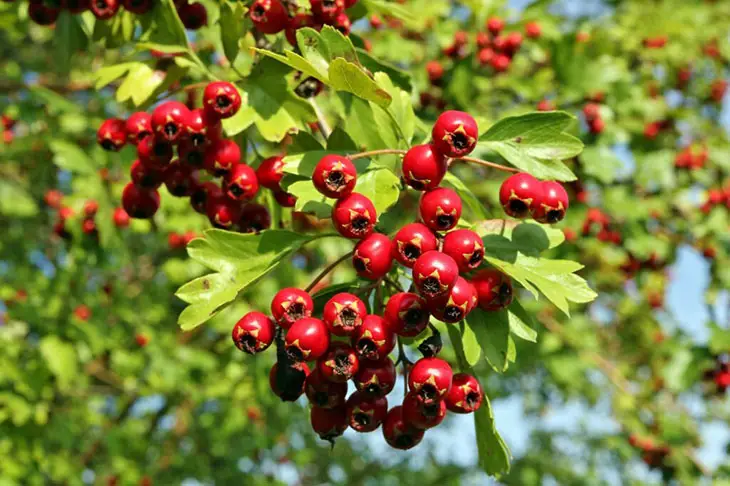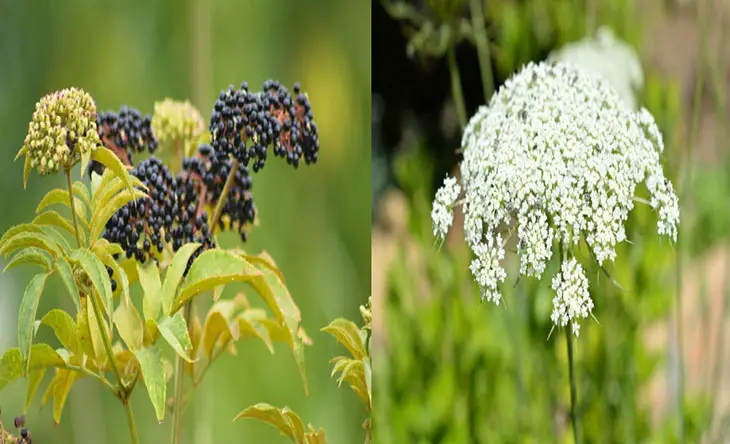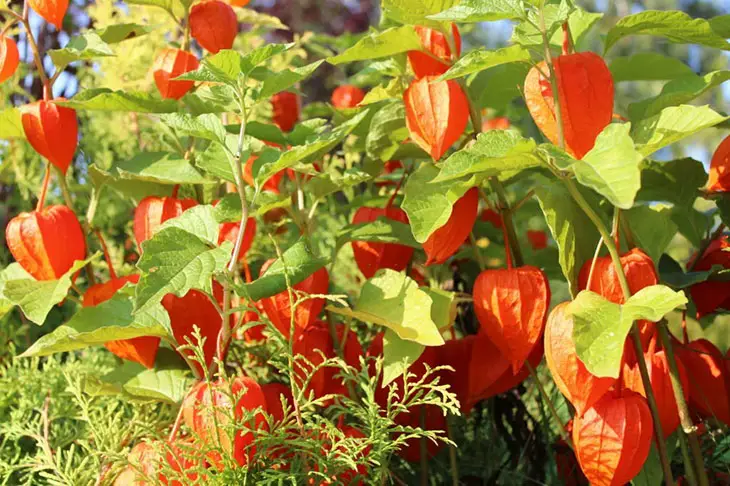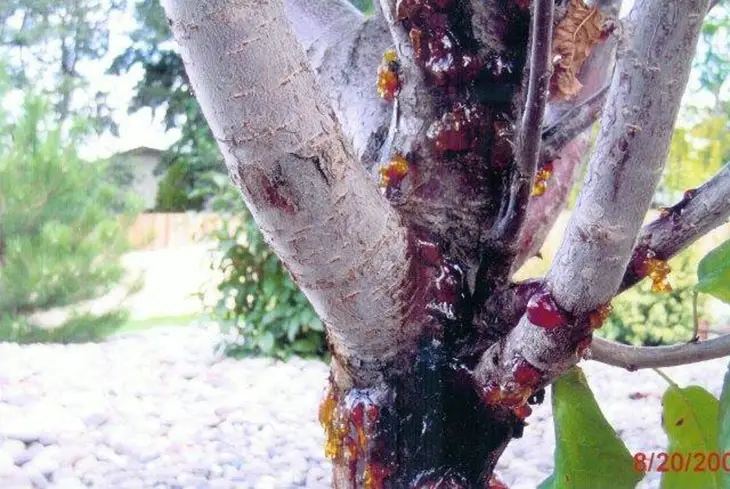
Purple is among the most adored colors for flower gardens and forests, adding a sense of solemn elegance and tenderness to your house backyard.
Nevertheless, thousands of tree varieties produce blossoms of different purple shades, which might confuse novice gardeners or even non-gardening clients looking for purple-flower plants to decorate their residences.
My purple flowering tree identification guide can hopefully lift some of your headaches. Keep scrolling.
Purple Flowering Tree Identification: How to Know Which Tree It Is?
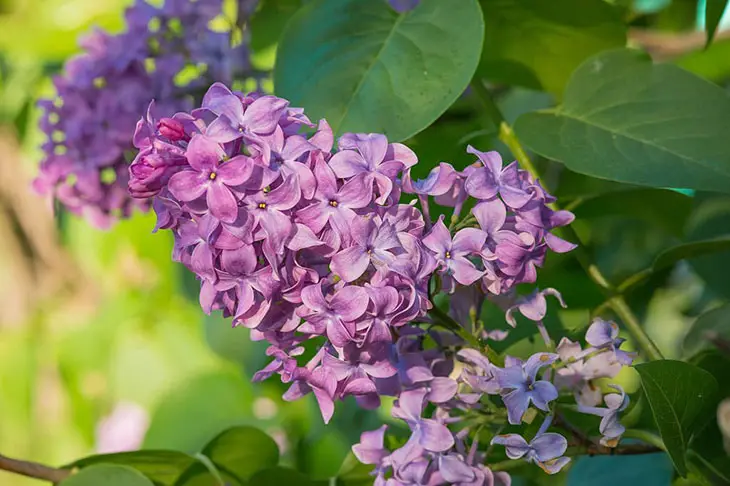
To identify its exact category and type, one must investigate the tree’s leaves, flower size and shape, locations, color shade, and – if needed – whether there are any fruits in a particular season.
These criteria help narrow down options and make it easier to differentiate purple-flowering shrubs.
Purple Blooms With Narrow, Light Leaves
One of the most common trees with purple blooms under Mediterranean weather is Jacaranda Mimosifolia (or simply Jacaranda, around 25-40 feet according to the USDA).
It usually shows up between April and August to manifest a dramatic display of vibrant flowers. Around these periods, most of its feather-light leaves have already dropped all over my yard.
Another popular plant is Chilopsis Linearis (commonly referred to as desert willow), known for its trademark narrow, long leaves and weeping growth.
They reach an average height of 15-20 feet (according to the USDA), boasting single or multiple trunks.
Despite bearing white-and-pink flowers with trumpet shapes, Chilopsis still breeds purple flowers for some of its horticultural cultivars.
Lois Adams, Royal Purple, Dark Storm, and Burgundy are several cases in point.
Small, Tubular Flowers in Clusters
Tubular, short, and small purple blooms mass together and form long spikes on each branch end of several chaste tree cultivars like Montrose Purple or Texas Lilac.
Their height averages out at 25 feet, and they are often multi-trunked, with elliptic dark green or gray-green leaves arranged like human fingers on one hand.
Also multi-stemmed – except for its multicolored and peeling bark – Catawba myrtle grows to 14 feet in width and 15 feet in height, as reported in USDA documents.
Their dense blooming heads with tubular, bright, and small purple flowers usually appear around late summer in my country.
Large and Open Flowers
Purple blooms do not just associate with tubular flowers. Silk floss trees are an unmistakable candidate with their stout, gray-green, spine-studded trunks and umbrella-like palmate canopy leaves.
Their colored flowers are the most visible in autumn as the trees temporarily shed off their leaves.
The five-petaled, large blooms vary from burgundy to pale pink and purple at the petal tips, accompanied by ivory, brown-blotched petal bases.
You may also consider purple orchid trees (or Bauhinia Purpurea), whose purple orchid-like flowers blossom from summer months to late winter.
At 25 feet in width and 20 feet in height, the trees are semi-deciduous in all their rounded-leave glory, wowing all my relatives whenever they drop by.
Flowers Look Like Sweet Peas
Evergreen, slow-growing shrubs that may get trained to smaller trees with age, Sophora Secundiflora (or Texas mountain laurels) grows to 15-20 feet in height and 10-12 feet in width.
Their purple-bluish flowers develop into a drooping cluster of 3-7 inches that are fragrant and showy, with aromas comparable to grape soda.
The leathery, dark greeves formulate a nice contrasting theme with the pendulous, spring-blooming purple sprays.
These flowers have strong tolerance against high weather and drought, which is partly why my family urges me to plant some for our future grandchildren.
And, of course, I cannot skim over Cercis (Redbud) – a multi-trunked, small tree with leaves that are shaped like hearts.
Their purplish-pink blooms are held in moderate clusters along the bare branches before erupting in Spring months for a full, showy display.
Extra Tips
When struggling to put a name on one particular tree or flower, I sometimes count on these indicators to pinpoint their origins:
Location:
Most purple-flowering plants thrive in areas with below-zero temperatures in winter. Rare exceptions (like Muskogee Myrtle) grow in mild-winter climates.
Flower Shade:
Royal Empresses have white edges on their purple flowers, for instance. Meanwhile, Jane Magnolias are bright white from the inside and turn purple-pinkish outwards.
Satomi dogwoods boast similarly purple-pinkish flowers, contrary to Ann Magnolias with their red-purplish petals.
Fruit Productions:
Lastly, I examine whether the flowers produce any fruit.
Satomi dogwood, for once, has red-pinkish fruits when autumn comes. Lavender twists birth brown fruits that look like 2-inch pea pods, which develop in October only to remain there through winter.
What Are The Best Purple Flowering Trees for Your Home and Garden?
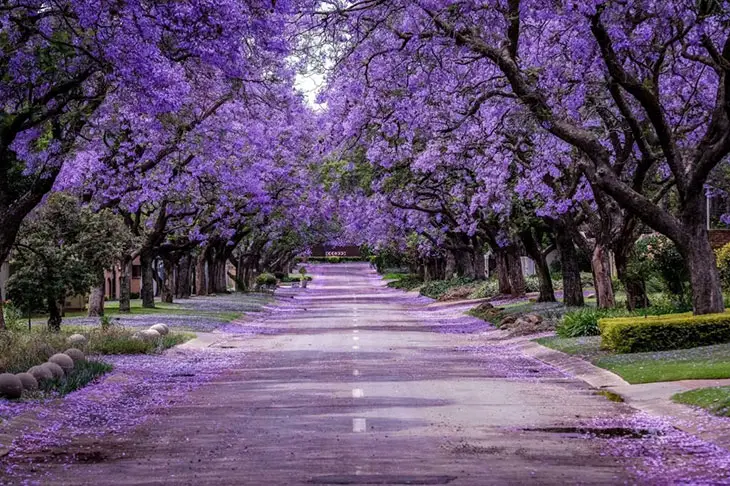
Let’s explore more purple varieties that give your garden elevated elegance and grace. In this section, you and I will revisit some of the trees already mentioned above, along with new additions as follows:
Chaste Tree
USDA hardiness zones: 7 – 8
Height: 3 to 20 feet tall.
Chaste trees grow well in well-draining, dry soil texture, so I never worry too much about water issues. Poor, sandy soils mean better growth; simple as that! Even road salt is tolerable for them.
Still, ensure they have enough direct sunlight (intense grow lights are acceptable).
Also, remember to prune chaste trees at least once per year; otherwise, their multi-stem shape might keep other surrounding plants from their sunlight supply.
Crape Myrtles (crepe myrtle)
USDA hardiness zones: 7 – 10.
Height: 30 to 35 feet tall.
Crape Myrtle churns out dense flower clusters that look like textured crepe paper, inspiring its current name!
I used to assume Crape Myrtles are exclusive to tropical and warm regions. However, it turns out some cultivars adapt quite well to mild temperatures.
Its Indica variants thrive beautifully under humidity and heat!
Desert Willow
USDA hardiness zones: 7b – 11.
Height: 15 to 25 feet tall.
Despite its name, this bright purple flowering tree is not willow at all! (though I find its weeping formation quite interesting).
While willows can grow large once planted on the ground, they also make amazing container plants for my home. I remind myself to water them more often, especially when summer temperatures peak.
Dogwood
USDA hardiness zones: 5 – 9.
Height: 15 to 20 feet tall.
Dogwoods are mostly recognized for their tiny, white flowers, though many of its varieties birth bold foliage and purple blooms all year round – hence its position on my list!
These purple budding trees require consistent yet moderate moisture. Provided enough sunlight, even colder climates cannot stall their growth.
And since dogwoods can spread quite far (about 15-20 feet in width and similar numbers in height), I have to ensure my yard has plenty of space for their plantations.
Ruby Falls
USDA hardiness zones: 6 – 8.
Height: up to 6 feet tall.
Ruby Falls, an Eastern Redbud cultivar, is a weeping, compact tree with heart-shaped, burgundy foliage that grows yellow in autumn before losing its leaves when winter comes.
In early spring, its stunning canopy explodes into showy red-purple flowers that look gorgeous in my woodland garden.
These big trees with purple flowers require partial shade or full sun for optimal results. And unfortunately, they are not exactly drought-tolerant, so I must water them regularly.
Fragrant Lilac Trees (Syringa vulgaris)
USDA hardiness zones: 3 – 7.
Height: 8 to 15 feet tall.
Although they are categorized as shrubs, fragrant lilacs can grow large and quickly within a short time.
In spring-early summer, their green, bright foliage gives room to tightly clustered lilac, purple, and lavender flowers – which inspires their name.
Fragrant lilacs have more than 200 cultivars, most of which stay compact, while some can grow quite tall.
Their hybridization is so impressive that they can develop almost anywhere – though the most ideal is regions with dry soil and full sun.
Hibiscus Tree
USDA hardiness zones: 9 – 11.
Height: 8 to 16 feet tall.
Also referred to as Sharon Rose, Hibiscus Syriacus are multi-stemmed rubs that might be trained into small trees (although certain cultivars grow naturally into single vertical stem columns, like Purple Pillar).
The beautiful, delicate flowers attract hummingbirds and butterflies in my garden through midsummer to autumn, each bloom lasting only one day.
The tree grows best in hardiness zones of dry, well-drained soils and direct sunlight. It is drought-, salt-, and even deer-tolerant, growing up to about 12 feet.
Since some varieties (ex: Purple Satins) churn out sterile seeds, a few cuttings can help propagate them.
Hibiscus is further divided into two types: climbing and non-climbing.
Korean Lilacs
USDA hardiness zones: 3 – 7.
Height: 6 to 10 feet tall.
My family is a huge fan of Jacaranda trees; unfortunately, we have moved to less tropical regions now. That’s why Korean Lilacs are a much more feasible option!
In most other seasons, Korean Lilacs look much smaller than Jacaranda with their moderate 10-foot height.
But springs are a different story: a few weeks after the other lilacs in my garden have already sprouted, Korean Lilacs burst to life with their tubular, lavender-pink petals!
They do well in extreme, freezing climates and can even withstand road salt. Provided that there is occasional rain and full sun, my Korean Lilac barely demands any upkeep.
Lavender Twist
USDA hardiness zones: 6b – 9.
Height: 4 to 6 feet tall.
The botanical name indicates its origin: a weeping tree related to the popular Eastern Redwood.
Its unique, weeping branches contort and twist into an umbrella-shaped, twiggy canopy that buds pink-lavender flowers.
However, this canopy lasts quite short, making Lavender Twist a great choice for my limited-space balcony.
Royal Purple Magnolia
USDA hardiness zones: 4 – 8.
Height: Up to 20 feet tall.
Royal Purple’s second name, Saucer Magnolia, stems from its massive purple and white fragrant blooms that reach eight inches to fill my garden with a lovely fragrance.
This variety loves acidic, well-draining soil with partial shade or fun sun.
Some protection against wind is required, but I must always be extra careful when planting Royal Purple against houses under southern exposure.
Otherwise, those artificial rushes of warmth might burst my flower buds too soon in spring, damaging their petals.
Kalmia Latifolia
USDA hardiness zones: 2, 3, 4, 5, 6, 7, 16, 17.
Height: 9.8 – 29.5 feet tall.
Their bursts of red and white flowers are streaked with purple and rich maroon, blossoming into life in early summer or late spring.
These types of trees can rise to 15 feet in height – although certain cultivars top out when reaching 6 feet, which makes them a lovely addition to my cramped room and small yard.
Kalmia will likely survive all conditions, from full sun to deep shade. However, I prefer to put it somewhere in between – close to partial shades – for fewer scorching risks and maximum blooms.
Purple Leaf Plum Trees
USDA hardiness zones: 5 – 8.
Height: Up to 25 feet tall.
The leaf colors steal all the spotlights; instead of the usual green, they are laced with dark purple-reddish all year round.
They exhibit pink to white blossoms in spring, standing out spectacularly against the colorful, deep foliage.
Both partial shade and full sun work well with plums, although I cannot help but notice that more shades make them greener instead of purple.
Weekly watering is needed until they are more established. After that, these trees grow quite drought-tolerant, only needing extra water on summer’s hottest days.
Magnolia Liliiflora (purple lily magnolia)
USDA hardiness zones: 5 – 8.
Height: 8 – 12 feet tall.
Despite the “Magnolia” in its name, Liliflora is not exactly similar to other Magnolias on my list.
It presents huge white blooms with light purple streaks underside, manifesting a lovely backdrop for my garden borders in spring.
Magnolia tree likes regular watering and acidic soil; however, its demands reduce as it matures, eventually only needing occasional watering in emergencies.
Purple Robe Locust
USDA hardiness zones: 4 – 8.
Height: Up to 40 feet tall.
This large, reddish-green tree loves rich soils and full sun.
Robe Locusts are deer-resistant and drought-tolerant thanks to their thick thorns, thriving confidently in rugged landscapes where other trees often struggle.
Handling Robe Locust is not difficult, though I always avoid pruning their branches in springtime. For whatever reason, they tend to bleed more than other flowers I have gardened.
Purple Wisteria
USDA hardiness zones: 5 – 9.
Height: 10 – 30 feet tall.
To my amazement, Purple Wisteria can climb to approximately 15 feet in height, churning purple-bluish bloom clusters that appear like they are dripping from their vines. So gorgeous!
These trees are very adaptable, naturally resisting most common diseases. Butterflies and hummingbirds love hanging around them.
Royal Purple Smoke Tree
USDA hardiness zones: 5 – 8.
Height: Up to 15 feet tall.
As peculiar as its name, Purple Royal Smoke always strikes a chord in my heart with its eye-opening beauty.
It has dark foliage with fringed purple blooms that resemble smoke, deepening into stunning red around mid-fall.
Purple Royal Smoke requires occasional deep water and full sun – but other than that, it’s fortunately very low-maintenance.
The tree’s cold tolerance makes it the best choice for my grandma’s northern gardens.
Takasago Cherry Blossom Trees
USDA hardiness zones: 4 – 8.
Height: Up to 20 feet tall.
Contrary to most Japan cherry trees (famous for their white and pink themes), Takasago produces flowers with almost lavender colors, standing out at the center of their bronze foliage.
With careful maintenance, Takasago might last more than 50 years. City pollution does not do these colorful trees any harm, allowing Japanese gardeners to plant them directly under the power lines.
Other Less-Common Names of Purple Trees
- India Pride: A stunning tree that blooms purple in mid – summer. It grows to 25-50 feet.
- Jane Magnolia: It’s a hybrid of Liliiflora and Stellata, coming in a burgundy-purple shade.
- Purple Covey: With deciduous, rose-purple flowers, this perfect tree is a delight in spring.
- Chinese Magnolia: A cross of Liliiflora and Denudata, Chinese Magnolia displays full purple that covers its branches from top to bottom.
FAQs on Purple Flower Tree Identification
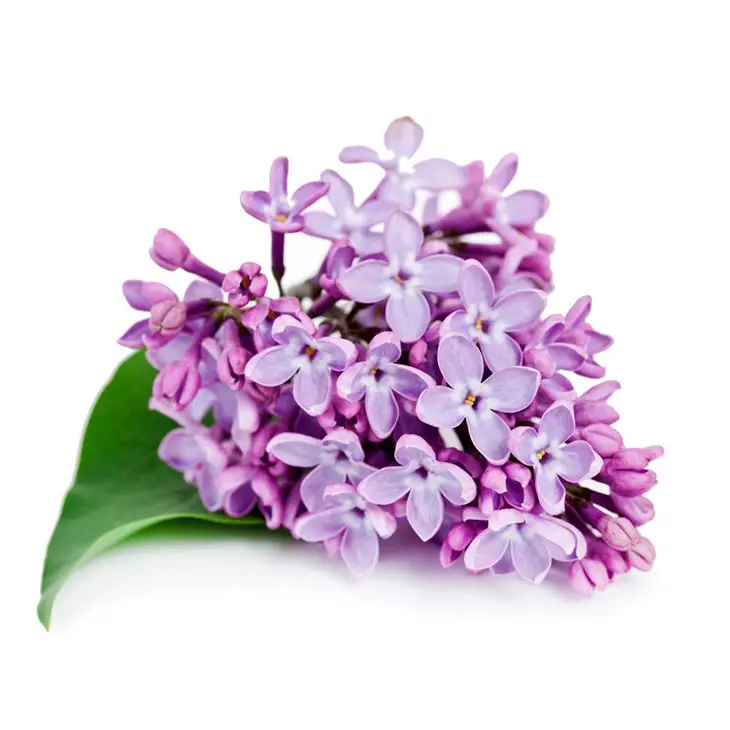
What Is The Name of Purple Flower Tree With The Fastest Growth Rate?
Royal Empress has been a popular gardener choice due to its impressive growth rate (20 feet within just ten years). Click here for advanced care tips.
What Is The Name of Purple Flowering Tree With The Best Smell?
Sophora Secundiflora takes the crown here. As mentioned in the first section, its aroma is like grape soda, giving me a fresh bout of energy anytime it catches my nose.
Conclusion
My purple flowering tree identification guidelines have introduced some of the best and easiest-to-grow varieties to bring to your home garden
Do your research to optimize their growing conditions, and feel free to write to me for more support on names of trees with purple flowers if needed.
